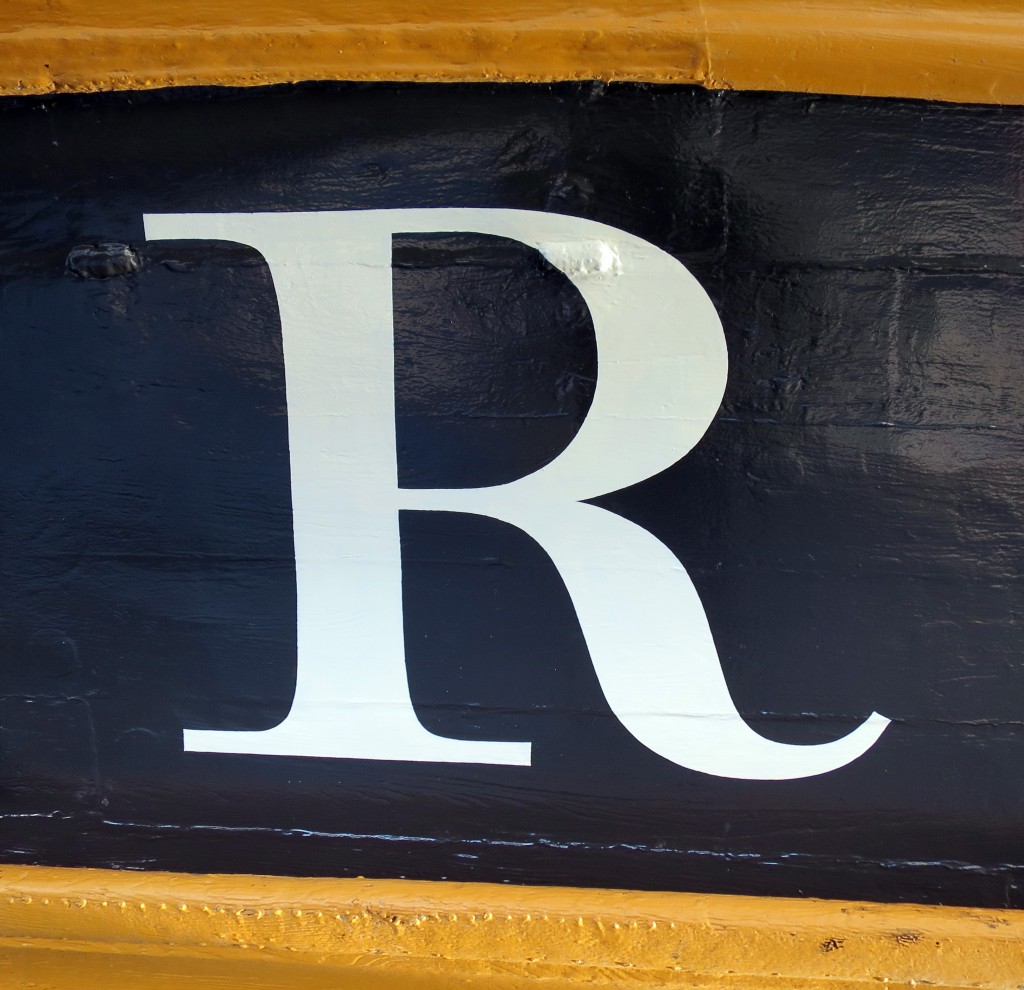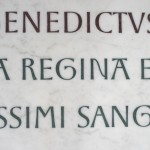The name of HMS Victory, launched in 1765, the oldest ship of the Royal Navy that is still in commission, has been repainted. The name had been painted when the vessel was refurbished in 2005 for the two-hundredth anniversary of the battle of Trafalgar, but unfortunately the style used was Trajan, the Roman inscriptional letter that was quite unknown in England in 1805. Since the ship was being repainted during 2015 in a colour that is believed to be closer to that used in 1805, the opportunity was taken to repaint the name at the stern, using the ‘English vernacular’, the bold traditional style of lettering that is believed to have been in use at that date. The model for the style was engraved lettering by George Bickham. There was also guidance from contemporary paintings, and from scale models of 18th-century warships at the National Maritime Museum.
The letters were painted by Phil Surey from drawings by Adrien Vasquez of John Morgan Studios. Advice and historical research was by James Mosley.












